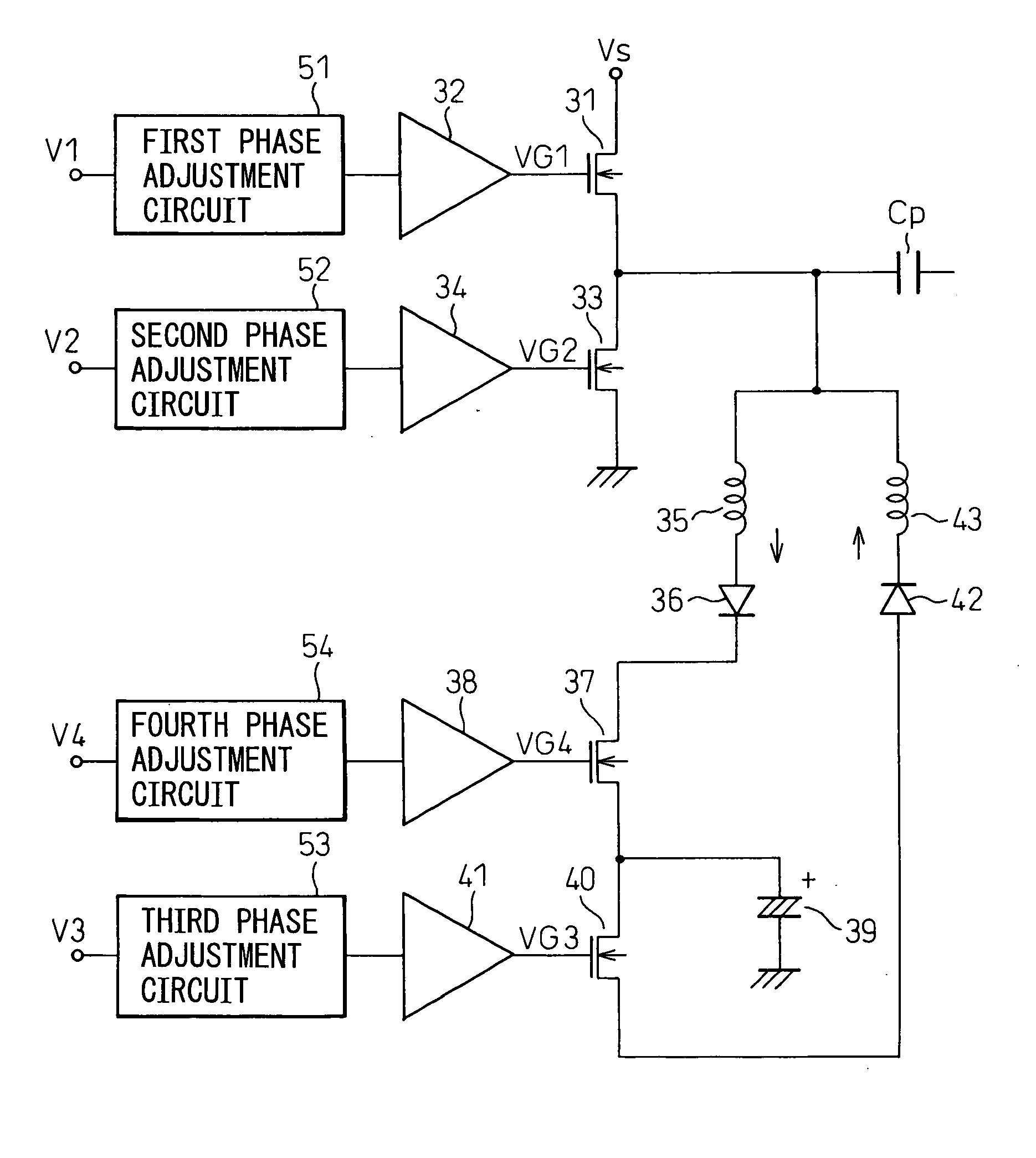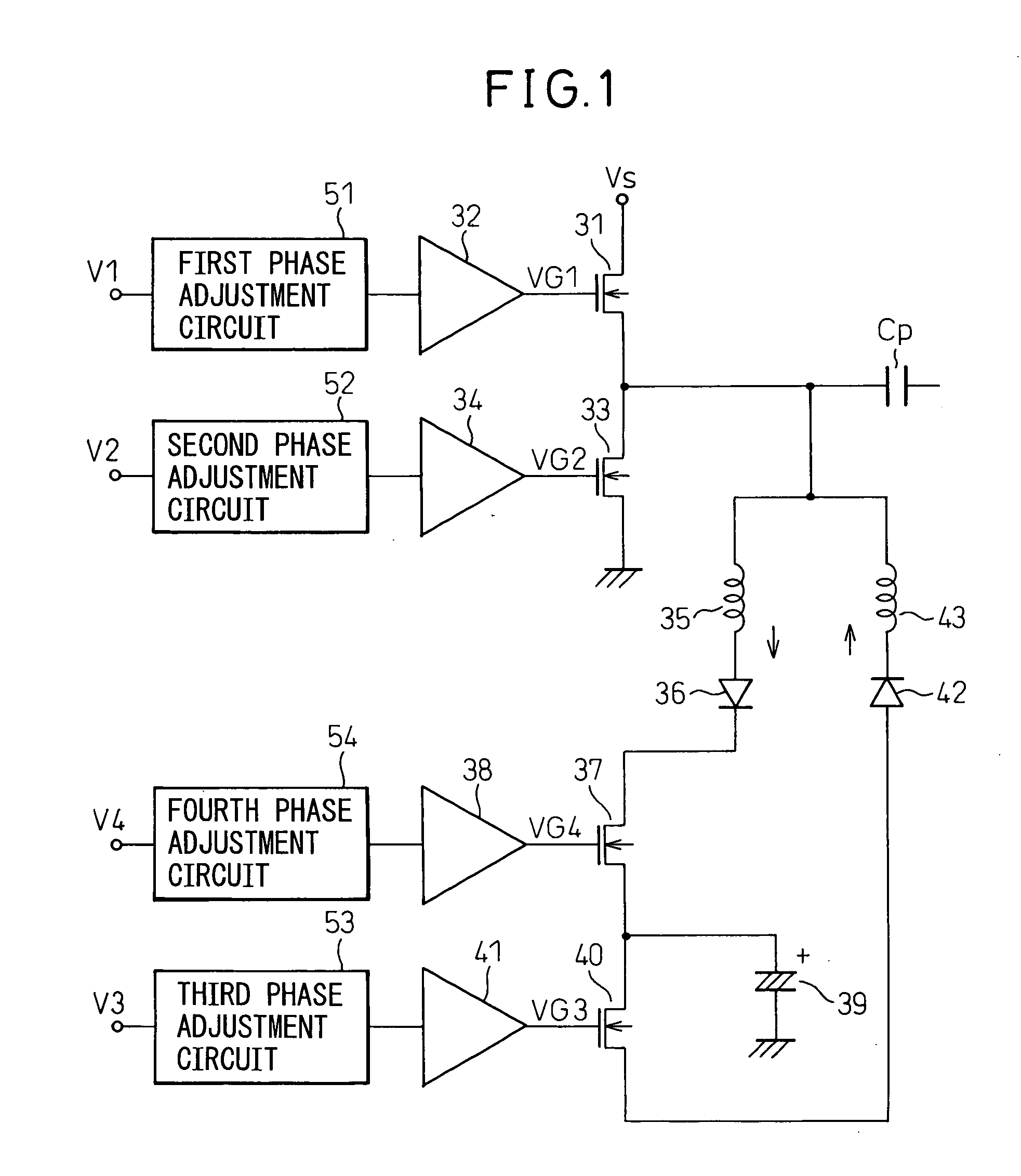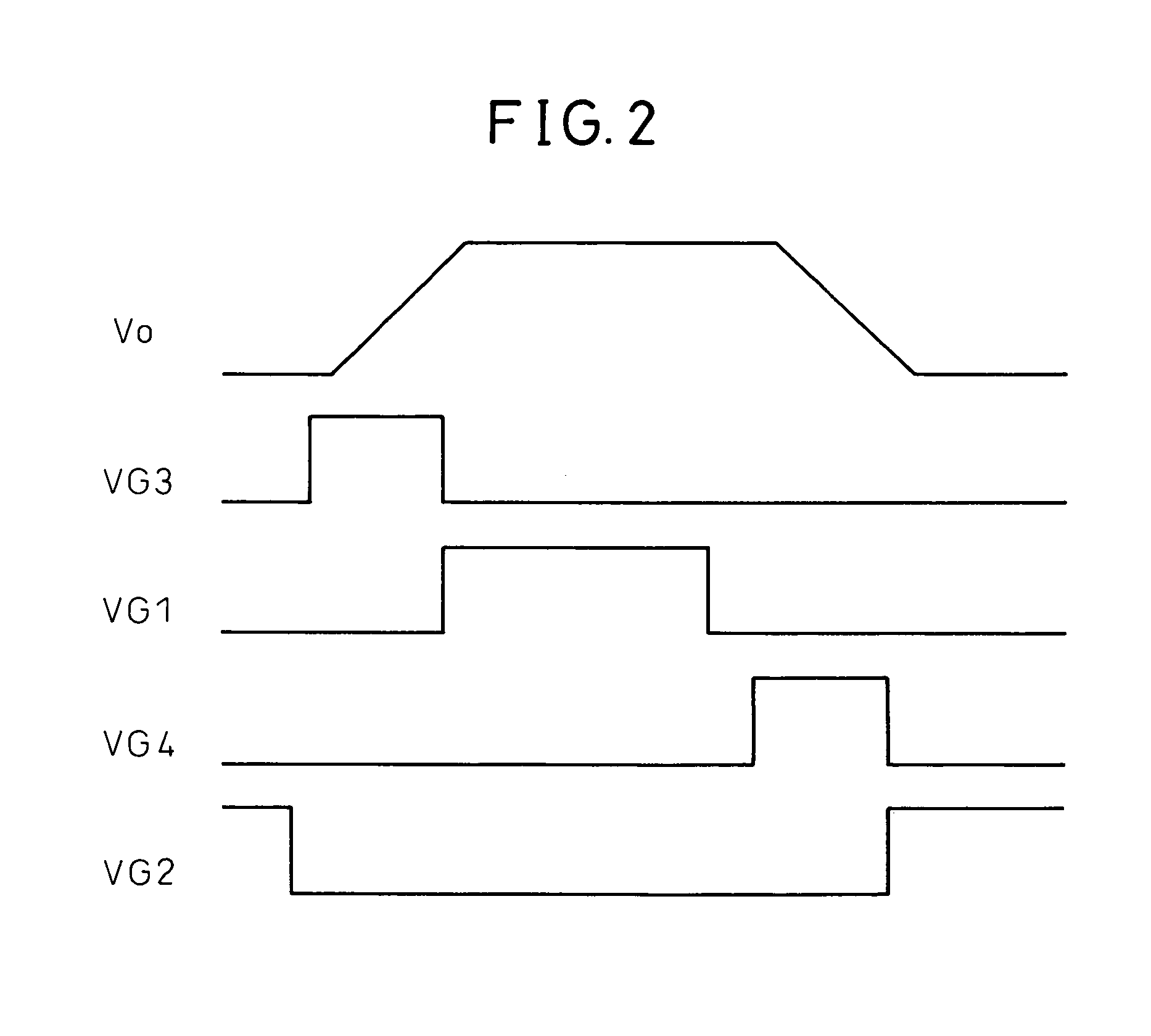Semiconductor integrated circuit, drive circuit, and plasma display apparatus
- Summary
- Abstract
- Description
- Claims
- Application Information
AI Technical Summary
Benefits of technology
Problems solved by technology
Method used
Image
Examples
first embodiment
[0062]FIG. 4 is a general block diagram of a PDP apparatus in the present invention. In a PDP 10, n first (X) electrodes and n second (Y) electrodes 12 are arranged adjacently by turns to form n pairs of X electrode 11 and Y electrode 12, and a discharge is caused to occur between the X electrode 11 and the Y electrode 12 of each pair to emit light to provide a display. The Y electrode and the X electrode are referred to as the display electrode, or the sustain electrode in some cases. Address electrodes 13 are provided in the direction perpendicular to the direction in which the display electrodes extend and a display cell is formed at the intersection of the X electrode 11 and the Y electrode 12.
[0063] The Y electrodes 12 are connected to a scan driver 14. The scan drive 14 is provided with switches 16, the number of which being equal to that of Y electrodes, and during the address period, the switches 16 are switched over so that a scan pulse from a scan signal generation circuit...
fourth embodiment
[0101]FIG. 19 is a block diagram showing the general configuration of a PDP apparatus in the present invention. The PDP apparatus is required to be highly precise and U.S. Pat. No. 6,373, 452 discloses a system in which light is emitted between display electrodes to produce a display. This system is referred to as the ALIS system and the same term is used here. The detailed configuration of the ALIS system is disclosed in U.S. Pat. No. 6,373,452, therefore, only the points relating to the present invention are briefly explained below.
[0102] As shown in FIG. 19, in a PDP employing the ALIS system, n Y electrodes (second electrodes) 12-0 and 12-E and n+1 X electrodes (first electrodes) 11-0 and 11-E are arranged adjacently by turns and light emission to produce a display is carried out between every pair of neighboring display electrodes (Y electrode and X electrode). Therefore, 2n display lines are formed with 2n+1 display electrodes. In other words, in the ALIS system, it is possibl...
fifth embodiment
[0111] The delay time adjustment circuit 61 in the fifth embodiment is constituted of the resistor R10 and resistors RI1, RI2, and RI3, a capacitor C1, and transistors QI1, QI2, and QI3. The input / output delay time comparison circuit 68 is constituted of a resistor RI4, a capacitor CI4, a reference voltage source Vref, and a differential amplifier circuit MI2. The output pulse detection circuit 66 is constituted of a differential amplifier circuit MI1.
[0112] The operation of the IC in the fifth embodiment is described below. In FIG. 24, the output pulse detection circuit 66 detects an output voltage output from OUT1 and converts the output voltage into an output pulse detection signal VO1 on the basis of GND, as shown in FIG. 25 (F). The input / output delay time detection circuit 67 detects the difference between the front edge of the output pulse detection signal VO1 and the front edge of the input signal IN1 and outputs an input / output delay time detection pulse VIO1 showing the ti...
PUM
 Login to View More
Login to View More Abstract
Description
Claims
Application Information
 Login to View More
Login to View More - R&D
- Intellectual Property
- Life Sciences
- Materials
- Tech Scout
- Unparalleled Data Quality
- Higher Quality Content
- 60% Fewer Hallucinations
Browse by: Latest US Patents, China's latest patents, Technical Efficacy Thesaurus, Application Domain, Technology Topic, Popular Technical Reports.
© 2025 PatSnap. All rights reserved.Legal|Privacy policy|Modern Slavery Act Transparency Statement|Sitemap|About US| Contact US: help@patsnap.com



